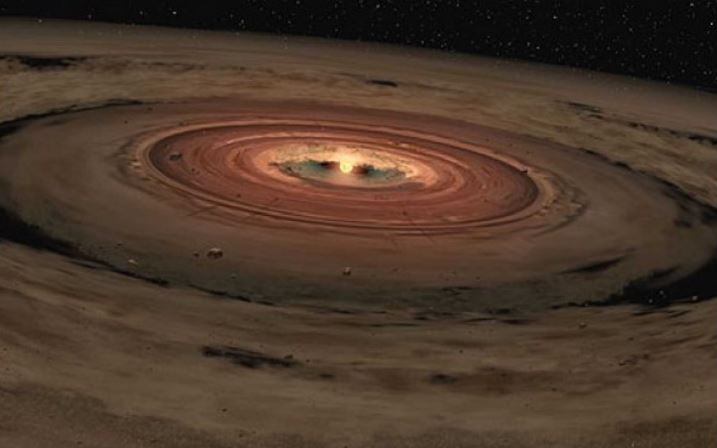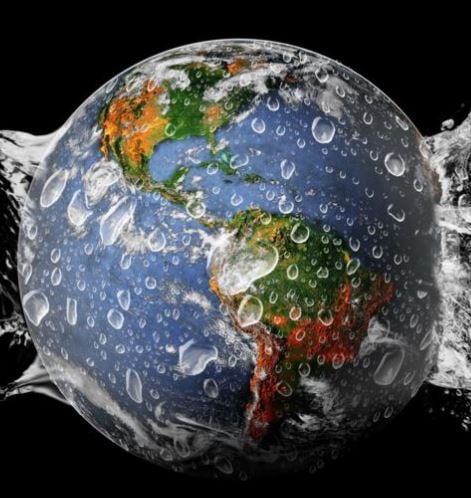The Earth had water from day one, it was not brought here by comets and meteorites, as many space scientists and geologists have suggested, a team of researchers from the Universities of Glasgow and Hawaii explain in the journal Science.
The exact origins of Earth’s water have long been a mystery and a subject of debate, that is, perhaps until now, the authors say.
In the new paper, the authors present what they describe as compelling new evidence that water has been a fundamental part of Earth since is was formed from the accretion of rocks and dust over 4.5 billion years ago.
 Approximately 71% of the Earth’s surface is covered in water.
Approximately 71% of the Earth’s surface is covered in water.
Study leader, Dr. Lydia Hallis, initially at the University of Hawaii at Manoa and now as a Marie Curie Research Fellow at the University of Glasgow, and colleagues describe how they used advanced ion microprobe technology to analyze a set of rocks from Baffin Island, in Nunavut (a Canadian territory) – Canada’s largest island.
The ion microprobe – a large-diameter, double-focusing secondary ion mass spectrometer (SIMS) sector instrument – housed at the University of Hawaii at Manoa, allowed scientists to focus on tiny pockets of glass inside these scientifically important rocks, and to detect minute quantities of water inside them.
Hydrogen-to-deuterium ratio
The hydrogen-to-deuterium ratio in the water provided them with valuable new clues regarding its origins.
Hydrogen has an atomic mass of one, while deuterium, a stable isotope of hydrogen (‘heavy hydrogen’) has an atomic mass of two. Scientists have discovered that water from several types of planetary bodies within our Solar System have distinct hydrogen/deuterium ratios.
Dr Hallis said:
“The Baffin Island rocks were collected back in 1985, and scientists have had a lot of time to analyse them in the intervening years. As a result of their efforts, we know that they contain a component from Earth’s deep mantle.”
“On their way to the surface, these rocks were never affected by sedimentary input from crustal rocks, and previous research shows their source region has remained untouched since the Earth’s formation. Essentially, they are some of the most primitive rocks we’ve ever found on the surface of the Earth, and so the water they contain gives us an invaluable insight into the Earth’s early history and where its water came from.”
 The dust around the Sun (protosolar nebula), that gathered and formed the planets of our Solar System 4.5 billion years ago, was probably rich in water, the researchers believe.
The dust around the Sun (protosolar nebula), that gathered and formed the planets of our Solar System 4.5 billion years ago, was probably rich in water, the researchers believe.
Water had tiny amounts of deuterium
They found that the water had very small amounts of deuterium, suggesting strongly that it was not brought to the Earth after it had been formed and cooled.
The water molecules more likely were carried on the dust that existed in a disk around the Sun (protosolar nebula) before the formation of the planets. Gradually, over time, this water-laden dust was slowly drawn together to form planet Earth.
Dr Hallis added:
“Even though a good deal of water would have been lost at the surface through evaporation in the heat of the formation process, enough survived to form the world’s water.”
“It’s an exciting discovery, and one which we simply didn’t have the technology to make just a few years ago. We’re looking forward to further research in this area in the future.”
In an Abstract in the journal, the authors concluded:
“Such strongly negative values indicate the existence of a component within Earth’s interior that inherited its D/H ratio directly from the protosolar nebula.”
Citation: “Evidence for primordial water in Earth’s deep mantle,” Lydia J. Hallis, Gary R. Huss, Kazuhide Nagashima, G. Jeffrey Taylor, Sæmundur A. Halldórsson, David R. Hilton, Michael J. Mottl and Karen J. Meech. Science. 13 November 2015: 350 (6262), 795-797. DOI:10.1126/science.aac4834.

